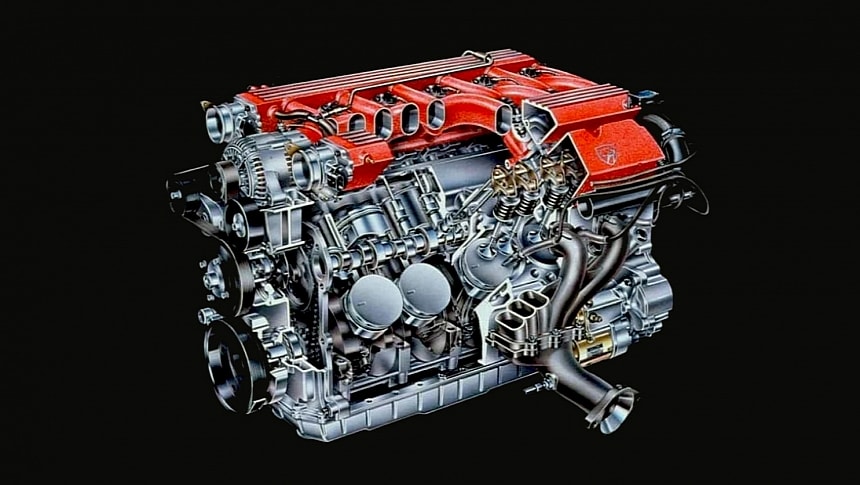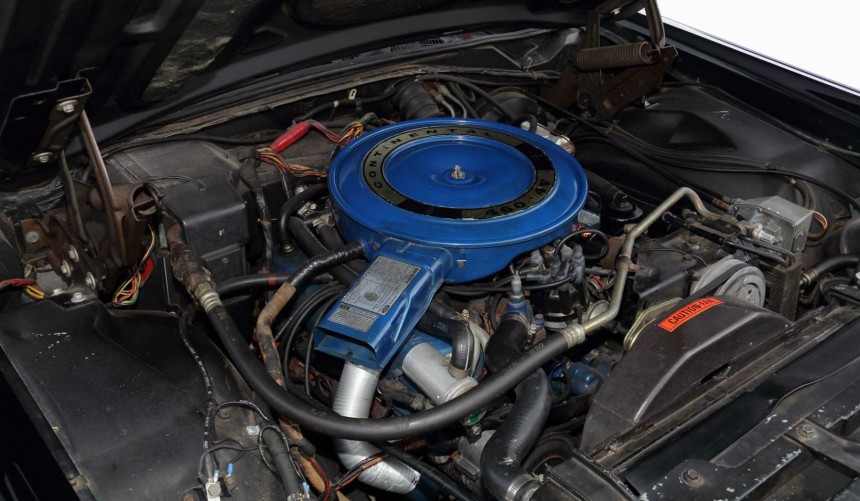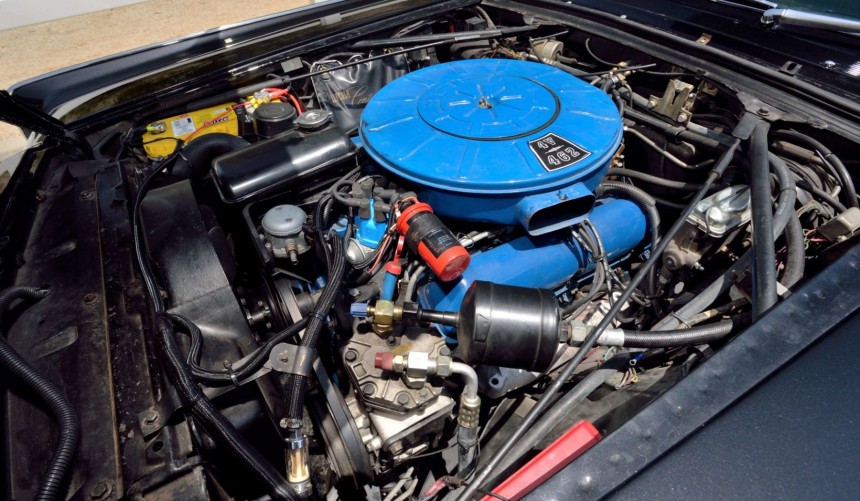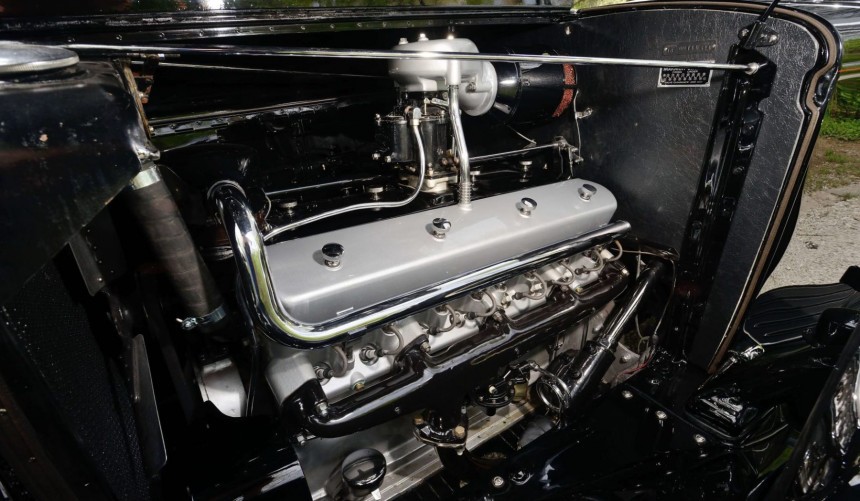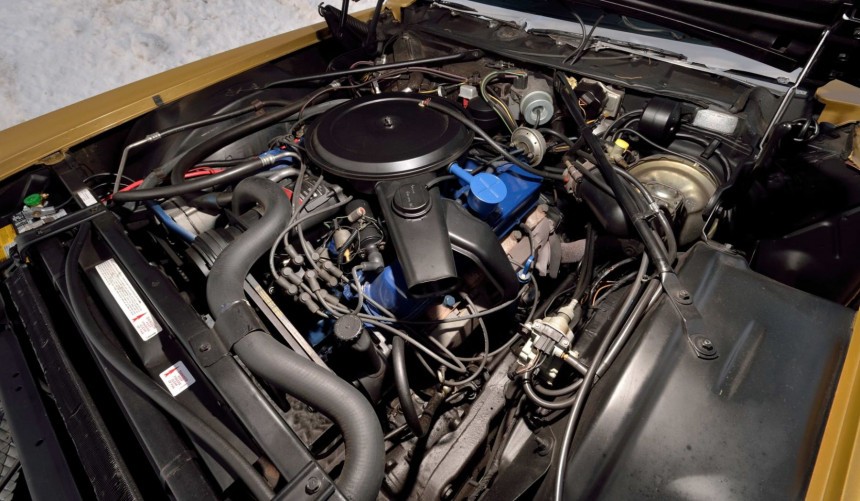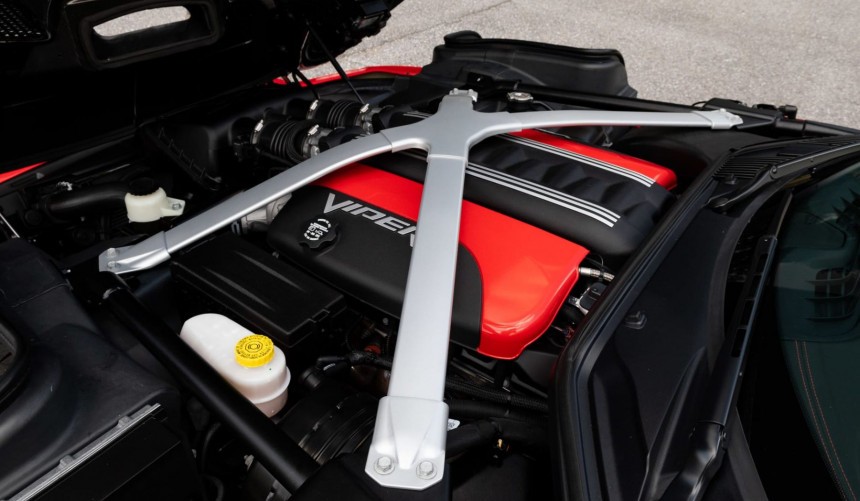For decades, American manufacturers went by the phrase " there's no replacement for displacement," and these five behemoths embody that philosophy best.
These days, the automotive industry is slowly but surely moving away from the internal combustion engine and embracing electric power.
While there are still plenty of ICE-powered production cars, most have to make do with tiny turbocharged powerplants.
However, decades ago, humongous engines reigned supreme, and the largest ever fitted into production cars came, of course, courtesy of American manufacturers.
Ford's 385 "Lima" big-block V8 engine family is famous for the high-performance Boss, Cobra Jet, and Super Cobra Jet 429s, but it also spawned the fifth largest displacement engine ever fitted into an American production car.
That version was the 460-ci (7.53-liter), introduced in 1968 as the successor to the 462 MEL and the 390 FE/FT.
The 460 debuted under the humongous hood of the Continental Mark III, and until 1971, it was solely used in Lincoln models.
Initially, it delivered 365 hp, but from 1972 onwards, stricter emission regulations limited its output to as low as 197 hp (1977).
Apart from Lincolns, the 460 was subsequently used in the Ford Thunderbird (1972–1976) and Mercury Cougar (1974–1976) as well as several other full-size and intermediate FoMoCo models.
It remained in production well into the 1990s but only saw use in Ford E-Series vans and heavy-duty versions of the F-Series.
Developed during the late 1950s, the MEL (Mercury-Edsel-Lincoln) was a series of big block V8s that replaced the Lincoln Y-block in FoMoCo's full-size passenger cars.
Introduced in 1958, it was initially available in three displacement versions: 383 ci (6.3 liters), 410 ci (6.7 liters), and 430 ci (7.0 liters).
In 1966, the 430 was replaced by an improved version that displaced 462 ci (7.6 liters). Equipped with hydraulic lifters and a four-barrel Carter AFB carb, the behemoth produced 340 hp.
In production until mid-1968, the last iteration of the MEL series was exclusive to Lincoln Continentals.
To this day, the 462 remains the largest displacement motor ever fitted inside the engine bay of a FoMoCo production car.
While the V8 became synonymous with the American automotive industry thanks to the potent units introduced during the golden age of muscle cars, decades earlier, some companies were developing engines with twice as many cylinders.
Now all but forgotten, the Indianapolis, Indiana-based Marmon Motor Car Company was the first manufacturer to develop a V16 way back in 1927.
However, the engine went into production four years later, and by that time, Cadillac had already launched its own V16, an engine that was designed by former Marmon engineer Owen Nacker.
Although it didn't earn the title of the world's first production V16, the Marmon motor became one of the largest ever fitted into an American production car.
Produced from 1931 to 1933, the all-aluminum OHV 491-ci (8.0-liter) was rated at 200 hp.
It powered the Marmon Sixteen, a line of luxurious cars that, in more ways than one, was superior to the era's Cadillacs.
Although its V16 "only" displaced 431 ci (7.1 liters), Cadillac still makes this list with the 500 - the largest-displacement V8 ever fitted into a production car.
The General Motors luxury division went past the 400-ci (6.55-liter) mark with its V8s in 1964 when it started producing a 390 Series-based 429-ci (7.0-liter).
However, by 1967, the engine had reached its limits, and since more power was needed to keep up with the competition, Cadillac launched the improved 472 series for the 1968 model year.
Two years later, the 472 got its first major improvement, and thanks to a new crankshaft with a 4.304-inch (109.3-mm) stroke, the V8's displacement rose to 500.02 ci (8.2 liters).
Exclusive to the Eldorado, the 500 initially made 400 hp, but new emission requirements forced the manufacturer to limit its output in the following years.
By 1975, its last year in production, the mighty 500 made 190 hp in standard form and 215 hp when fitted with the optional Bendix electronic fuel injection system.
Originally designed in the late 1980s and launched on public roads in 1991, the Dodge Viper became America's first mass-produced modern supercar.
In production until 2017 in three distinct generations, the Viper broke with tradition, and instead of a V8, it was powered by a naturally aspirated V10.
The first iteration of the mighty engine was designed by Lamborghini, who, at the time, was owned by Chrysler.
Initially, the all-aluminum, pushrod two-valves-per-cylinder 90-degree V10 displaced 487.6 ci (8.0 liters) and made 400 hp, but during its lifespan, it was continually improved.
The last, most advanced version was the fifth generation (aka Phase VX or VX I), which debuted in 2012.
Capable of delivering up to 650 hp, it reached 511.5 ci (8.4 liters) and became the largest displacement engine ever fitted into an American production car.
While there are still plenty of ICE-powered production cars, most have to make do with tiny turbocharged powerplants.
However, decades ago, humongous engines reigned supreme, and the largest ever fitted into production cars came, of course, courtesy of American manufacturers.
Ford 385-Series 460 V8
That version was the 460-ci (7.53-liter), introduced in 1968 as the successor to the 462 MEL and the 390 FE/FT.
The 460 debuted under the humongous hood of the Continental Mark III, and until 1971, it was solely used in Lincoln models.
Initially, it delivered 365 hp, but from 1972 onwards, stricter emission regulations limited its output to as low as 197 hp (1977).
Apart from Lincolns, the 460 was subsequently used in the Ford Thunderbird (1972–1976) and Mercury Cougar (1974–1976) as well as several other full-size and intermediate FoMoCo models.
It remained in production well into the 1990s but only saw use in Ford E-Series vans and heavy-duty versions of the F-Series.
Ford 462 MEL V8
Introduced in 1958, it was initially available in three displacement versions: 383 ci (6.3 liters), 410 ci (6.7 liters), and 430 ci (7.0 liters).
In 1966, the 430 was replaced by an improved version that displaced 462 ci (7.6 liters). Equipped with hydraulic lifters and a four-barrel Carter AFB carb, the behemoth produced 340 hp.
In production until mid-1968, the last iteration of the MEL series was exclusive to Lincoln Continentals.
To this day, the 462 remains the largest displacement motor ever fitted inside the engine bay of a FoMoCo production car.
Marmon V16
Now all but forgotten, the Indianapolis, Indiana-based Marmon Motor Car Company was the first manufacturer to develop a V16 way back in 1927.
However, the engine went into production four years later, and by that time, Cadillac had already launched its own V16, an engine that was designed by former Marmon engineer Owen Nacker.
Although it didn't earn the title of the world's first production V16, the Marmon motor became one of the largest ever fitted into an American production car.
Produced from 1931 to 1933, the all-aluminum OHV 491-ci (8.0-liter) was rated at 200 hp.
It powered the Marmon Sixteen, a line of luxurious cars that, in more ways than one, was superior to the era's Cadillacs.
Cadillac 500 V8
The General Motors luxury division went past the 400-ci (6.55-liter) mark with its V8s in 1964 when it started producing a 390 Series-based 429-ci (7.0-liter).
However, by 1967, the engine had reached its limits, and since more power was needed to keep up with the competition, Cadillac launched the improved 472 series for the 1968 model year.
Two years later, the 472 got its first major improvement, and thanks to a new crankshaft with a 4.304-inch (109.3-mm) stroke, the V8's displacement rose to 500.02 ci (8.2 liters).
Exclusive to the Eldorado, the 500 initially made 400 hp, but new emission requirements forced the manufacturer to limit its output in the following years.
By 1975, its last year in production, the mighty 500 made 190 hp in standard form and 215 hp when fitted with the optional Bendix electronic fuel injection system.
Dodge VX I V10
In production until 2017 in three distinct generations, the Viper broke with tradition, and instead of a V8, it was powered by a naturally aspirated V10.
The first iteration of the mighty engine was designed by Lamborghini, who, at the time, was owned by Chrysler.
Initially, the all-aluminum, pushrod two-valves-per-cylinder 90-degree V10 displaced 487.6 ci (8.0 liters) and made 400 hp, but during its lifespan, it was continually improved.
The last, most advanced version was the fifth generation (aka Phase VX or VX I), which debuted in 2012.
Capable of delivering up to 650 hp, it reached 511.5 ci (8.4 liters) and became the largest displacement engine ever fitted into an American production car.
